Welcome to San Bruno, where birds of all sizes and colors take flight in the beautiful skies. From the majestic Red-tailed Hawks soaring high above the city to the sweet-singing Yellow Warblers flitting around the trees, San Bruno is home to a wide variety of birds.
From small songbirds to large raptors, the diversity of bird species is astounding. With its proximity to San Francisco Bay, San Bruno is a prime spot for bird watching and offers birders an opportunity to observe some of the most fascinating avian creatures in the world.
Whether you are a novice or an experienced birder, the opportunities for birding in San Bruno are endless.
1. Great Blue Heron
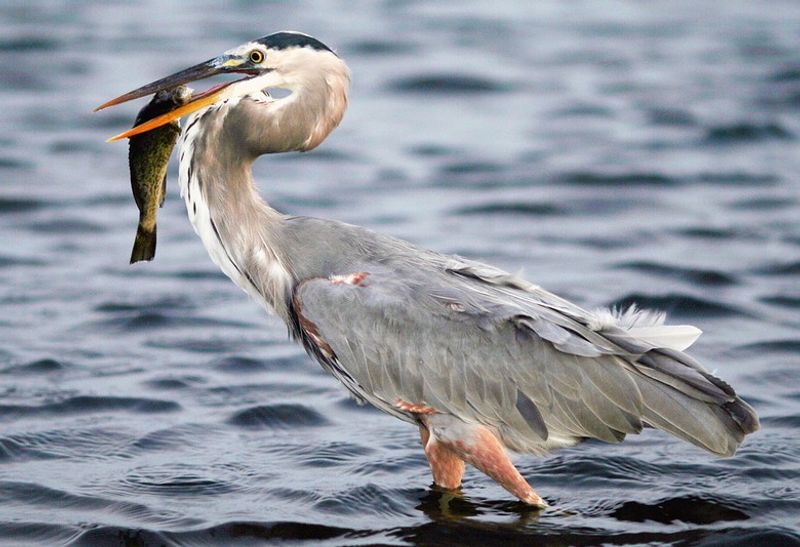
The great blue heron is an impressive bird. It is a member of the Ardeidae family of herons and is found in many parts of North and Central America, as well as in South America, the Caribbean, and the Galápagos Islands.
This large wading bird has long legs and neck and is typically gray-blue in color. It is typically found near open water and wetlands and is often seen standing still in shallow water, waiting for a chance to strike its prey.
The great blue heron is an important part of the ecosystem, as it helps to control the population of fish, amphibians, and other aquatic animals. It is also a popular bird for birders and is often seen in marshes, ponds, and other wetland habitats.
| Kingdom | Animalia |
| Phylum | Chordata |
| Class | Aves |
| Order | Pelecaniformes |
| Family | Ardeidae |
| Genus | Ardea |
| Species | A. herodias |
2. Red-Tailed Hawk
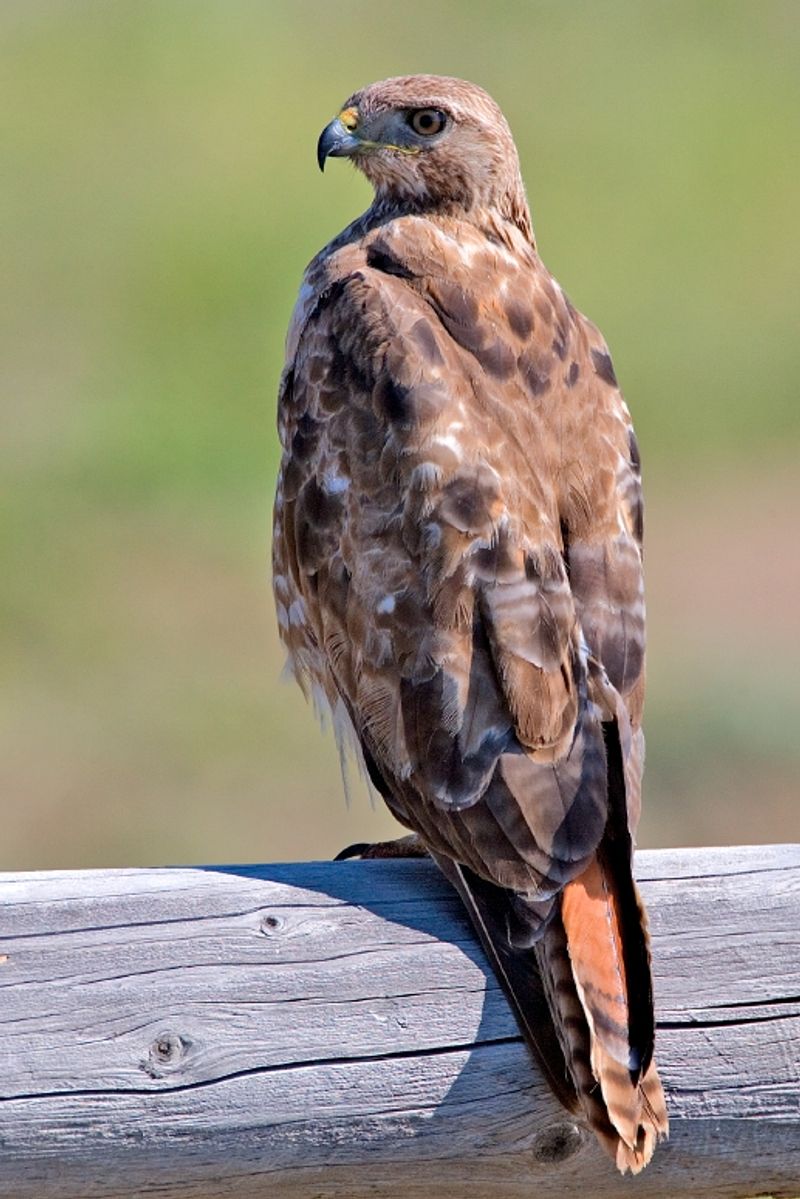
The red-tailed hawk is a species of bird of prey that is widely distributed across North America. From the interior of Alaska and northern Canada to as far south as Panama and the West Indies, this hawk can be found breeding in many different climates.
It is a member of the genus Buteo, which is one of the most common types of birds of prey in both North America and across the world. This species of hawk is known for its large wingspan and its red-colored tail feathers, both of which make it easy to identify in the wild.
These traits, combined with its wide range, make it a common sight in many different habitats. Red-tailed hawks are opportunistic hunters, often preying on smaller animals such as rodents, snakes, and insects.
They also scavenge for carrion, making them an important part of the local food chain.
| Kingdom | Animalia |
| Phylum | Chordata |
| Class | Aves |
| Order | Accipitriformes |
| Family | Accipitridae |
| Genus | Buteo |
| Species | B. jamaicensis |
3. Turkey Vulture
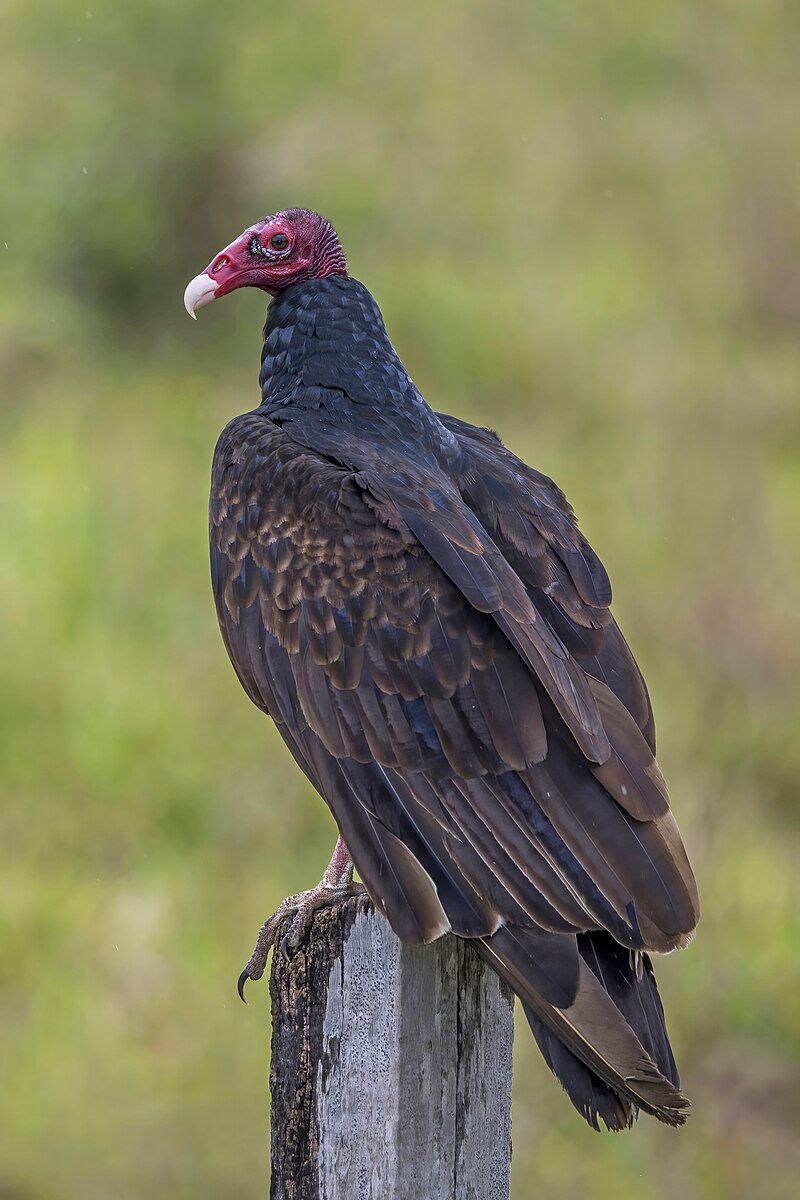
The Turkey Vulture is one of the most common vultures that can be found in the New World. It is part of the Cathartes genus, which is part of the Cathartidae family.
This species of vulture is found all over the Americas, from southern Canada to the southernmost tip of South America.
It is one of the most widespread of the New World vultures and is often seen soaring in the sky or perched atop trees and powerlines. The Turkey Vulture is a large bird, with black feathers and a bald head. It has a wingspan of up to six feet and can weigh up to four pounds.
It has a powerful sense of smell, which helps it find food. It primarily feeds on carrion, which is the decaying flesh of dead animals.
It also has the ability to spot dead animals from high in the sky, thanks to its keen eyesight. The Turkey Vulture plays an important role in the environment, as it helps to keep the ecosystem clean by consuming decaying flesh and eliminating potential sources of disease.
It is also beneficial to humans, as it helps to reduce the risk of diseases that can be spread by animals. The Turkey Vulture is also an important part of Native American culture and is often seen as a symbol of death and renewal.
| Kingdom | Animalia |
| Phylum | Chordata |
| Class | Aves |
| Order | Accipitriformes |
| Family | Cathartidae |
| Genus | Cathartes |
| Species | C. aura |
4. Double-Crested Cormorant
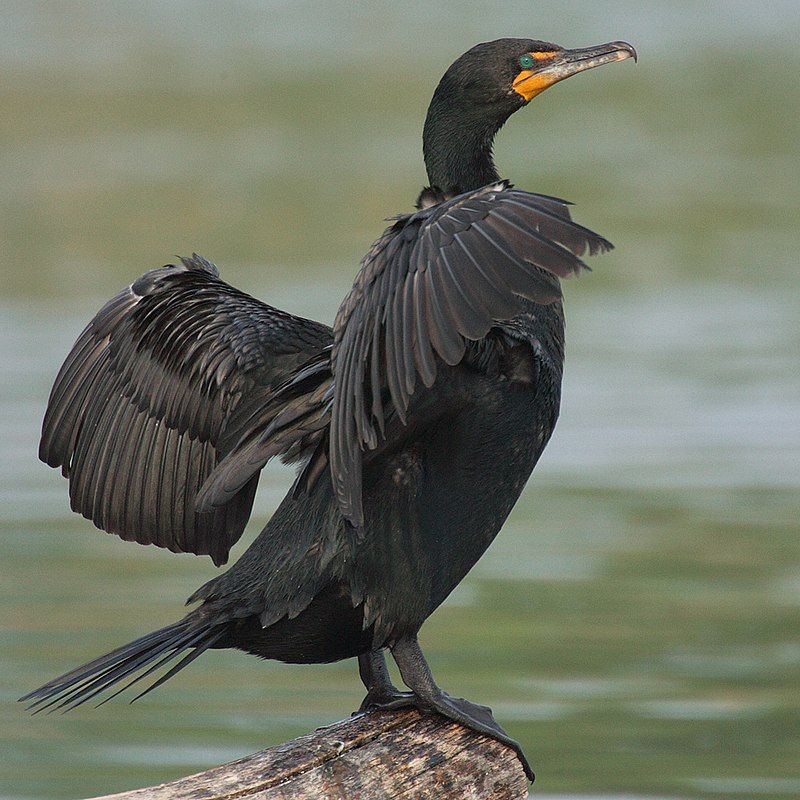
The double-crested cormorant is a species of water bird belonging to the cormorant family. It is a widely distributed species across North America, inhabiting rivers, lakes, and coastal areas.
It is found in Alaska, stretching from the Aleutian Islands, all the way down to Florida and Mexico. This species has adapted to live in a variety of habitats, from tropical climates to colder areas.
The double-crested cormorant is an adaptable species, capable of surviving in a range of different habitats. They will often inhabit shallow bodies of water, though they can also be found in the ocean.
This species is a strong swimmer and can dive beneath the surface to find food. They have webbed feet to help them swim, and their large wings are well-suited for soaring. This species is also an adept hunter, preying on small fish, crustaceans, and other aquatic creatures.
They will often feed in groups and can be seen flying in large flocks around their habitats. They also have the ability to dive beneath the surface and pursue their prey. The double-crested cormorant is an important species in North American ecosystems.
It is a key species in aquatic food webs, helping to keep the population of smaller fish in check. They are also important for their role in nutrient cycling, as they help to cycle nutrients from the ocean into rivers and lakes.
The double-crested cormorant is an impressive species, capable of surviving and thriving in a variety of different habitats. Its large wings and webbed feet make it an adept hunter, and its presence is important for the health of North American ecosystems.
| Kingdom | Animalia |
| Phylum | Chordata |
| Class | Aves |
| Order | Suliformes |
| Family | Phalacrocoracidae |
| Genus | Nannopterum |
| Species | N. auritum |
5. Purple Finch
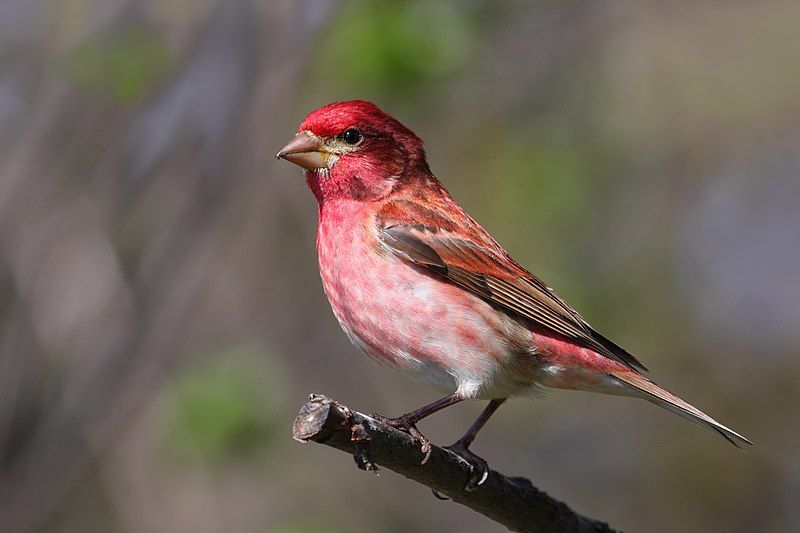
The purple finch is a species of bird that belongs to the finch family, scientifically known as Fringillidae. This family is a large group of passerine birds, which are birds that perch and have strong claws and bills.
All members of the finch family are known for their small, conical bills and often colorful plumage. The purple finch is no exception, as it has a bright purple-red coloring on its head, chest, and wings.
It is also known for its unique and melodious songs. The purple finch is native to North America and is commonly seen in the Eastern part of the continent. It is a medium-sized bird, measuring between seven and eight inches in length. It has a wingspan of about 11 to 13 inches.
Its song is often described as a warbling trill and it is usually heard during the breeding season. The purple finch is a sociable bird, often seen in small flocks. During the winter months, it can be found in large numbers in open areas such as fields and gardens.
Its diet consists mainly of seeds and berries. These birds are also known to visit bird feeders, which makes them popular amongst birdwatchers. The purple finch is an important part of the ecosystem, as it helps to spread seeds and disperse berries.
It is also important for its role in controlling insect populations. The purple finch is a species of conservation concern due to its declining populations, and it is listed as a species of special concern in some parts of North America.
As a result, it is important to protect the habitat of the purple finch in order to ensure its continued existence.
| Kingdom | Animalia |
| Phylum | Chordata |
| Class | Aves |
| Order | Passeriformes |
| Family | Fringillidae |
| Genus | Haemorhous |
| Species | H. purpureus |
6. Red-Shouldered Hawk
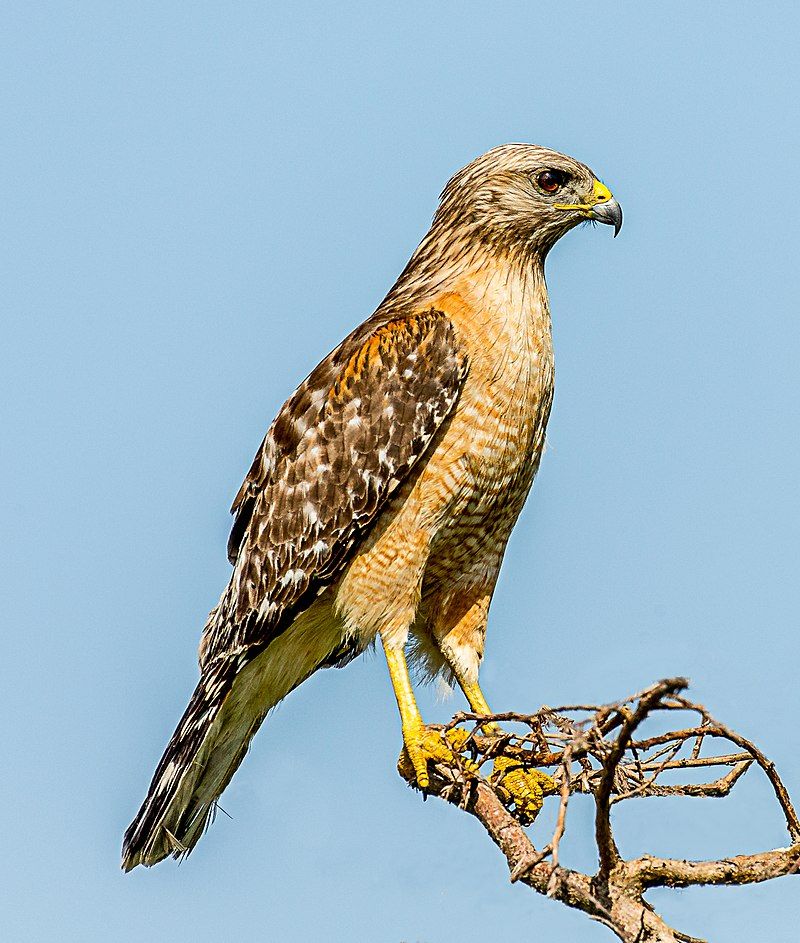
The red-shouldered hawk is a type of buteo, a medium-sized bird of prey. Its breeding range covers a large part of North America, stretching from the east coast all the way to California and Mexico.
It is a permanent resident of most of these areas, though some of the northernmost birds migrate south to central Mexico during the winter.
This species of hawk is an important part of the food chain in its range, helping to keep insect and other small animal populations in check.
It is also a popular bird of prey for birdwatchers, as it can be found in a variety of habitats, such as woodlands, swamps, and agricultural fields. Its distinctive red shoulders make it easy to identify, making it an enjoyable bird to observe.
| Kingdom | Animalia |
| Phylum | Chordata |
| Class | Aves |
| Order | Accipitriformes |
| Family | Accipitridae |
| Genus | Buteo |
| Species | B. lineatus |
7. American Robin
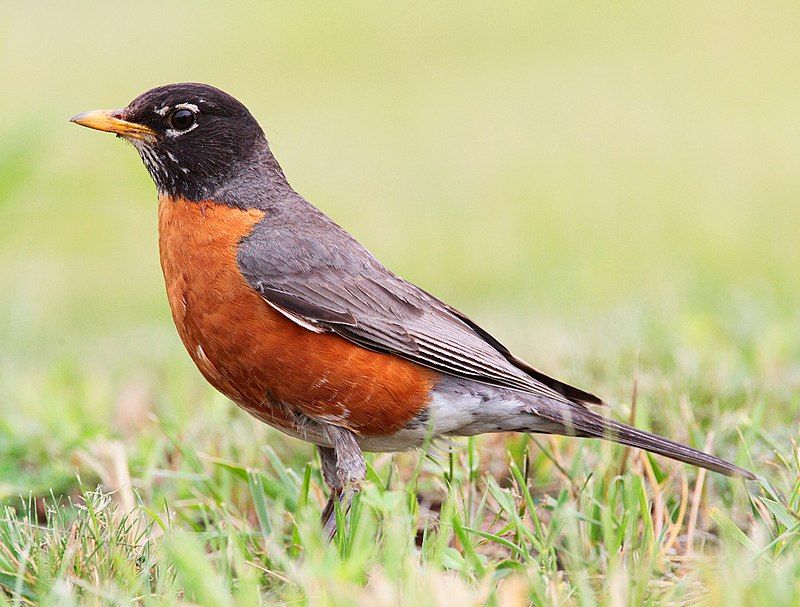
The American robin is a species of migratory bird that belongs to the true thrush genus and Turdidae family. This species is closely related to the European robin, with both birds sharing a similar reddish-orange breast.
Despite the similarities, the American and European robins are not closely related, with the European robin belonging to the Old World flycatcher family. The American robin is native to North America and is one of the most recognizable and beloved birds in the region.
This species is often seen in gardens, parks, and forests, making its presence known with its bright red breast and melodic song. The American robin is a popular bird for many reasons, and its migratory nature adds another layer of intrigue to its character.
The American robin migrates south in the winter months, making it a sight for sore eyes when it returns to its northern breeding grounds in the spring.
The American robin is an important species in the ecosystem, serving as an important food source for other animals, as well as a pollinator. It is also a key indicator of the health of the environment, as its presence can often indicate a healthy habitat.
All in all, the American robin is an important part of the natural world and should be appreciated and protected.
| Kingdom | Animalia |
| Phylum | Chordata |
| Class | Aves |
| Order | Passeriformes |
| Family | Turdidae |
| Genus | Turdus |
| Species | T. migratorius |
8. American Kestrel
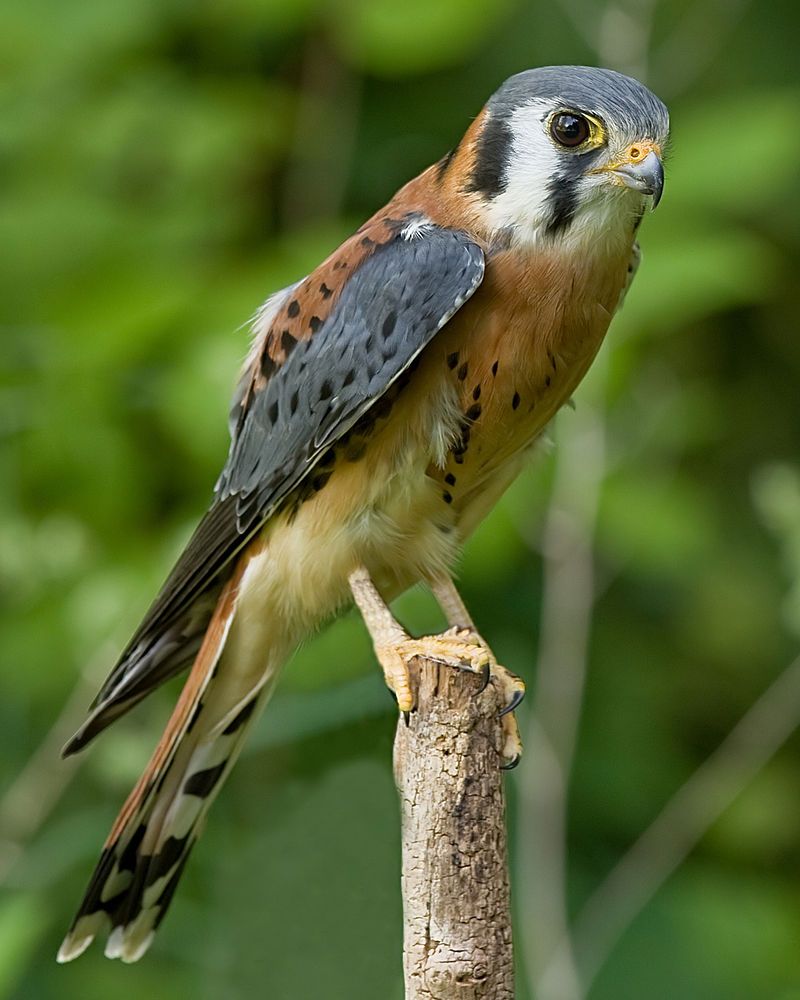
The American kestrel is the smallest and most common falcon in North America and is also known as the sparrow hawk. Its size can vary depending on the sex and subspecies, with a two-to-one range of sizes.
The smallest specimens are about the same weight as a blue jay, while the largest are similar in size to a mourning dove. This bird is easily identified by its distinctive markings, including its rusty-red back and tail, blue-gray wings, and white chest with black spots.
Its diet consists primarily of insects, small mammals, and small birds, and it can often be seen hovering in the air or perched on posts and wires.
The American kestrel is a vital part of its natural environment and contributes to keeping the population of certain pests under control.
| Kingdom | Animalia |
| Phylum | Chordata |
| Class | Aves |
| Order | Falconiformes |
| Family | Falconidae |
| Genus | Falco |
| Species | F. sparverius |
9. American Goldfinch
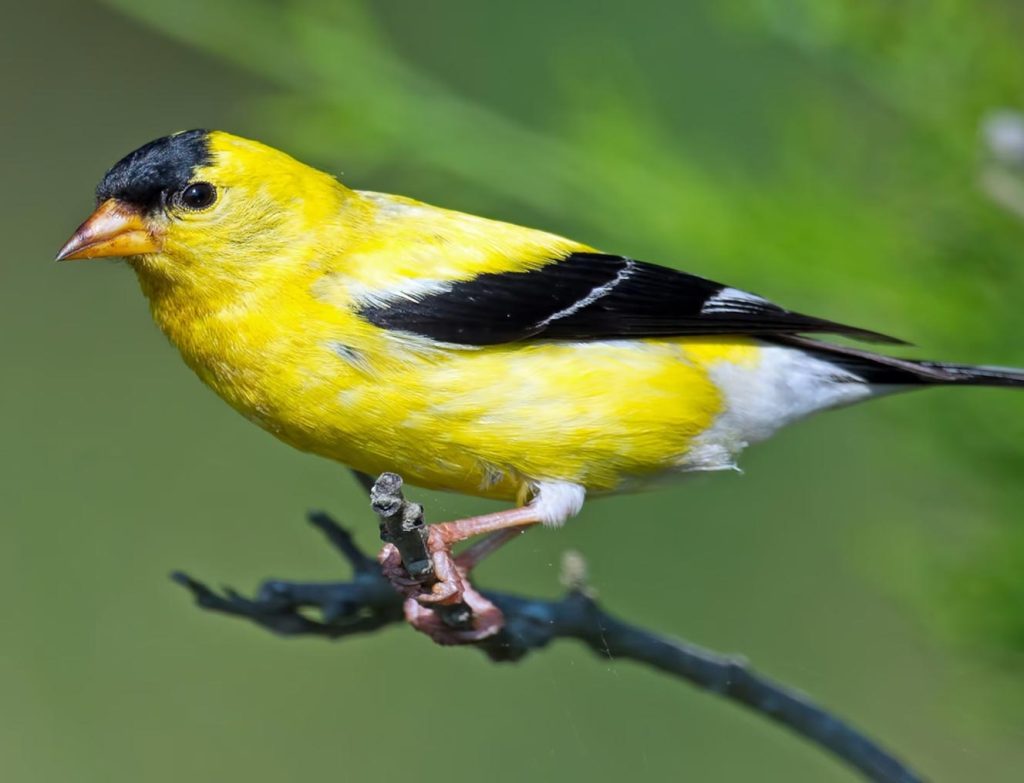
Source: kids.nationalgeographic.com
The American goldfinch is a small bird from North America, belonging to the finch family. It migrates seasonally, traveling long distances to take advantage of the weather and food supply.
During the breeding season, it can be found as far north as mid-Alberta and as far south as North Carolina. In winter, its range extends south of the Canada–United States border, down to Mexico.
This bird species is adapted to take advantage of the changing temperatures and food sources, ensuring its survival in different geographical regions. Its migration patterns are a marvel of nature, allowing it to travel thousands of miles in a short period of time.
| Kingdom | Animalia |
| Phylum | Chordata |
| Class | Aves |
| Order | Passeriformes |
| Family | Fringillidae |
| Genus | Spinus |
| Species | S. tristis |
10. Song Sparrow
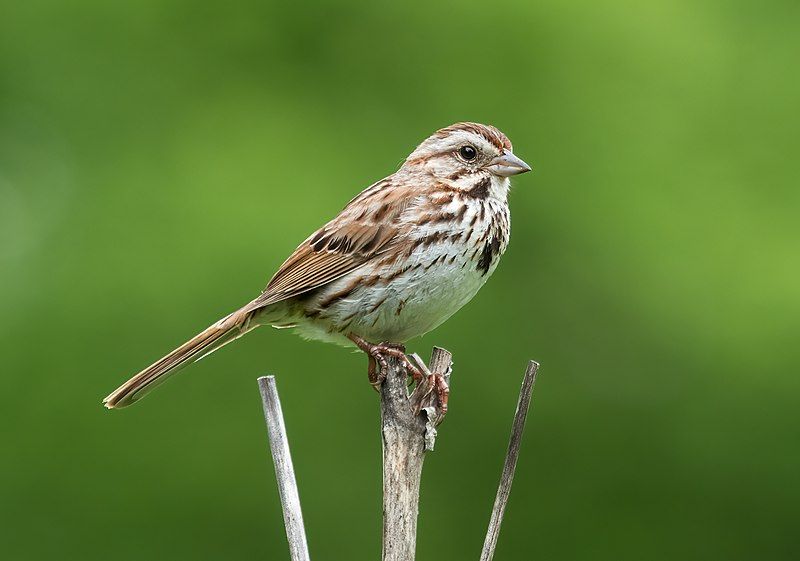
The song sparrow is a species of sparrow native to North America that is characterized by its medium size and abundance in the region.
It is one of the most variable and adaptable species of North American native sparrows, meaning it is able to adjust its behavior and habitat preferences to accommodate a wide range of environmental conditions.
Song sparrows can be found in a variety of habitats, including forests, meadows, and urban areas, and are able to survive in a range of temperatures, from the hottest deserts to the coldest mountain ranges.
The song sparrow’s adaptability, combined with its wide geographical range and large population size, makes it one of the most successful sparrow species in North America.
| Kingdom | Animalia |
| Phylum | Chordata |
| Class | Aves |
| Order | Passeriformes |
| Family | Passerellidae |
| Genus | Melospiza |
| Species | M. melodia |
11. California Quail
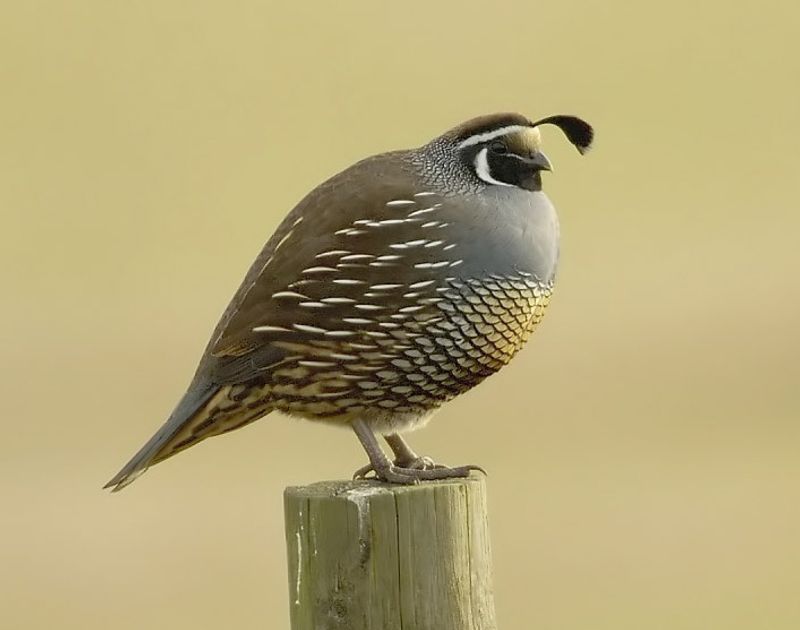
The California quail, also known as the California Valley quail or Valley quail, is a small bird belonging to the New World quail family. It is ground-dwelling, meaning it prefers to live close to the ground rather than in trees or other elevated areas.
The California quail is easily identifiable by its plume, a curved crest made of six feathers that droop forward. The color of the feathers differs between males and females, with males boasting a black plume and females having a brown one.
The flanks of the bird are brown with white streaks. The California quail is a unique bird and can be distinguished by its size, plume, and coloring.
| Kingdom | Animalia |
| Phylum | Chordata |
| Class | Aves |
| Order | Galliformes |
| Family | Odontophoridae |
| Genus | Callipepla |
| Species | C. californica |
12. California Scrub Jay
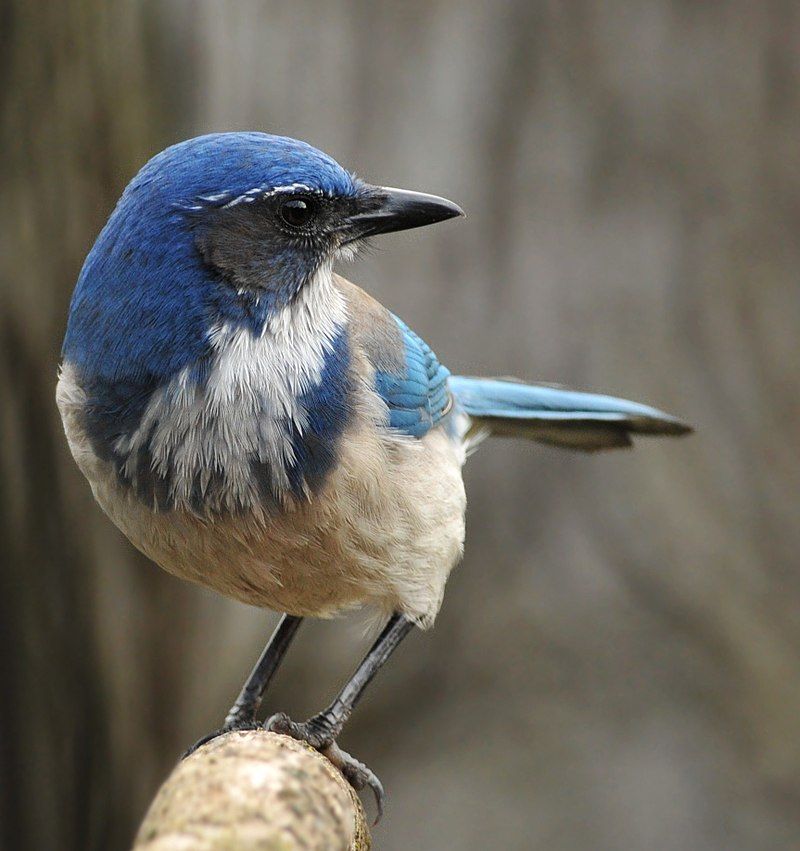
The California scrub jay is a bird species that is native to western North America. Its range stretches from southern British Columbia all the way down to California and western Nevada, near Reno. It also extends west of the Sierra Nevada mountain range.
This species of scrub jay has adapted to its western North American habitat and is a common sight in the region. It is easily recognized by its bright blue and grey plumage and its distinctive calls.
California scrub jays mainly feed on insects and other small animals, as well as nuts, acorns, and other seeds. They often form large flocks when foraging and can be found in a variety of habitats, from coniferous and deciduous forests to chaparral and oak woodland.
The California scrub jay is an important bird species in the region, helping to keep insect populations in check and dispersing seeds that can help maintain healthy vegetation.
| Kingdom | Animalia |
| Phylum | Chordata |
| Class | Aves |
| Order | Passeriformes |
| Family | Corvidae |
| Genus | Aphelocoma |
| Species | A. californica |
13. Common Raven
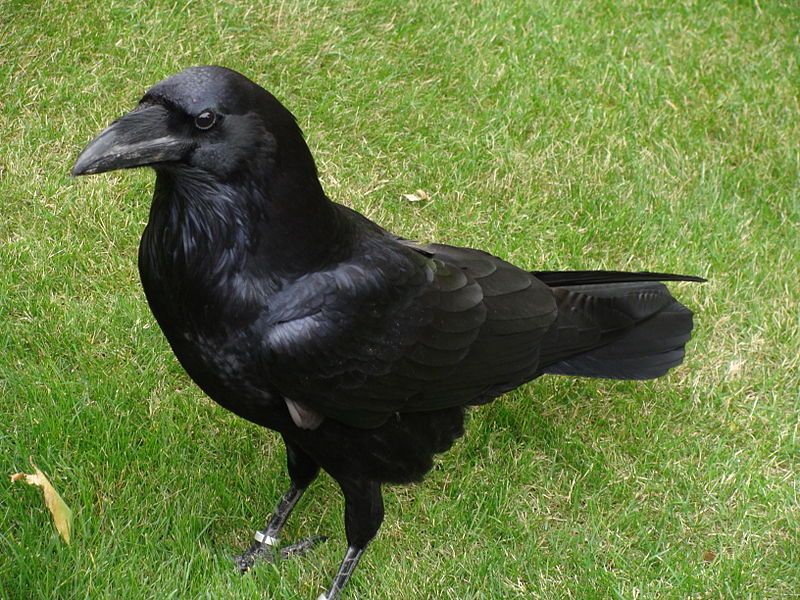
The common raven is a large, all-black passerine bird that belongs to the corvid family. It is among the most widely distributed of all birds, occupying habitats across the Northern Hemisphere, ranging from snowy Arctic tundra to deserts.
Ravens are known for their intelligence and adaptability, which have enabled them to thrive in a variety of environments. They are omnivorous, eating a variety of food items, including small mammals, fruit, and carrion.
Ravens are noted for their complex vocalizations, which are used to communicate with one another and to express emotion. They are also known for their playful behavior, which can include aerial acrobatics and games such as teasing other birds or animals.
The common raven is an integral part of many cultures, appearing in folklore, literature, and art around the world.
| Kingdom | Animalia |
| Phylum | Chordata |
| Class | Aves |
| Order | Passeriformes |
| Family | Corvidae |
| Genus | Corvus |
| Species | C. corax |
14. Cooper’s Hawk
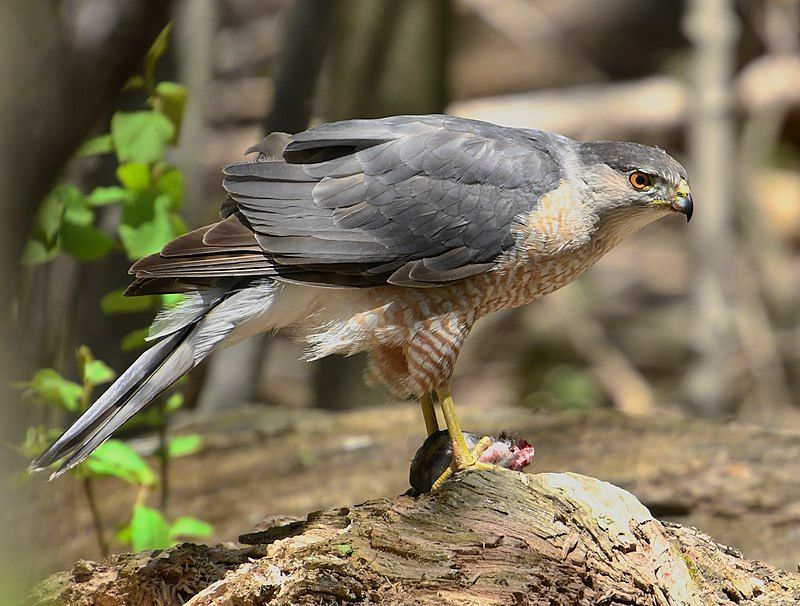
Cooper’s hawk is a species of hawk that is found throughout North America, from southern Canada all the way to Mexico. Its size is considered to be medium-sized when compared to other species of hawks, and it is native to the continent.
It is known for its ability to fly swiftly and maneuver skillfully through dense forests and woodlands. Its preferred prey includes small mammals, such as mice, songbirds, and sometimes even other birds.
They can also be found in urban areas, where they can easily feed pigeons and other small animals. Cooper’s hawks are known to be very territorial, and will actively defend their nests and territories from other birds.
They are also known to mate for life, and their breeding season can begin as early as March or April.
| Kingdom | Animalia |
| Phylum | Chordata |
| Class | Aves |
| Order | Accipitriformes |
| Family | Accipitridae |
| Genus | Accipiter |
| Species | A. cooperii |
15. Nuttall’s Woodpecker
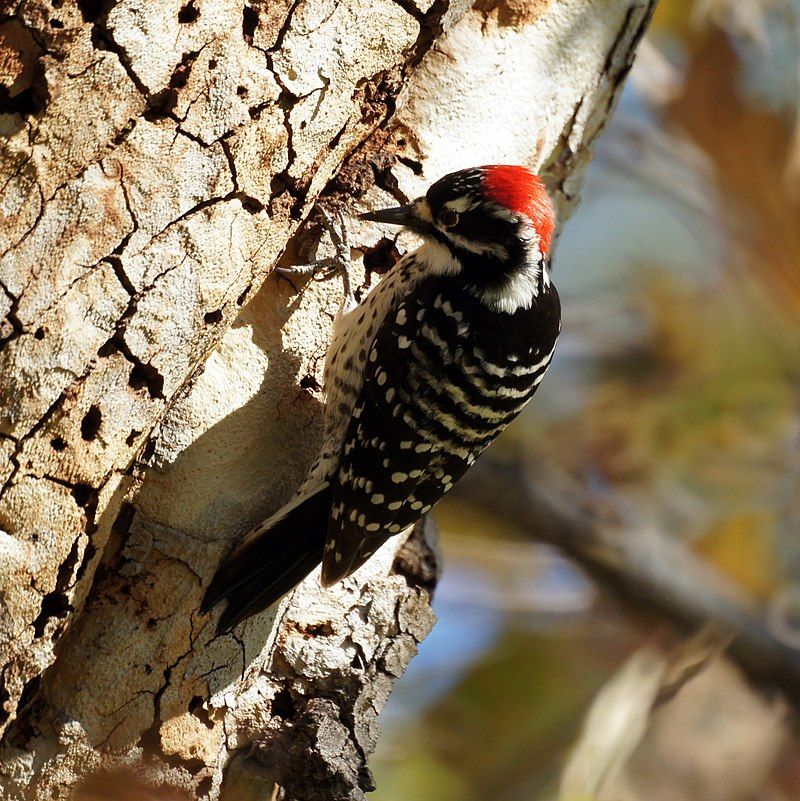
Nuttall’s woodpecker is a species of woodpecker that was named after the English naturalist Thomas Nuttall in 1843. This species of woodpecker is endemic to the oak woodlands of California and is closely related to the ladder-backed woodpecker.
In terms of physical appearance, Nuttall’s woodpecker is quite similar to the ladder-backed woodpecker. It has a long pointed bill, a white throat, and breast, a barred back, and black and white wing markings. Its body is quite slender and its tail is short and square.
Furthermore, genetic studies have shown that Nuttall’s woodpecker is closely related to the ladder-backed woodpecker, suggesting that the two species may have evolved from a common ancestor.
Nuttall’s woodpecker is considered to be a fairly common species in its range, though its populations have been declining in recent years due to habitat loss and degradation.
This species primarily feeds on insects and their larvae, which it finds by tapping on the bark of trees and probing into crevices. They are also known to take fruits and nuts from time to time.
In addition, Nuttall’s woodpecker is an important species for woodlands, as it helps to disperse the seeds of oaks and other trees. In conclusion, Nuttall’s woodpecker is a species of woodpecker that is closely related to the ladder-backed woodpecker.
It is found primarily in oak woodlands of California and plays an important role in the dispersal of oak seeds. Despite its declining population, this species is still considered to be fairly common in its range.
| Kingdom | Animalia |
| Phylum | Chordata |
| Class | Aves |
| Order | Piciformes |
| Family | Picidae |
| Genus | Dryobates |
| Species | D. nuttallii |
16. Bewick’s Wren
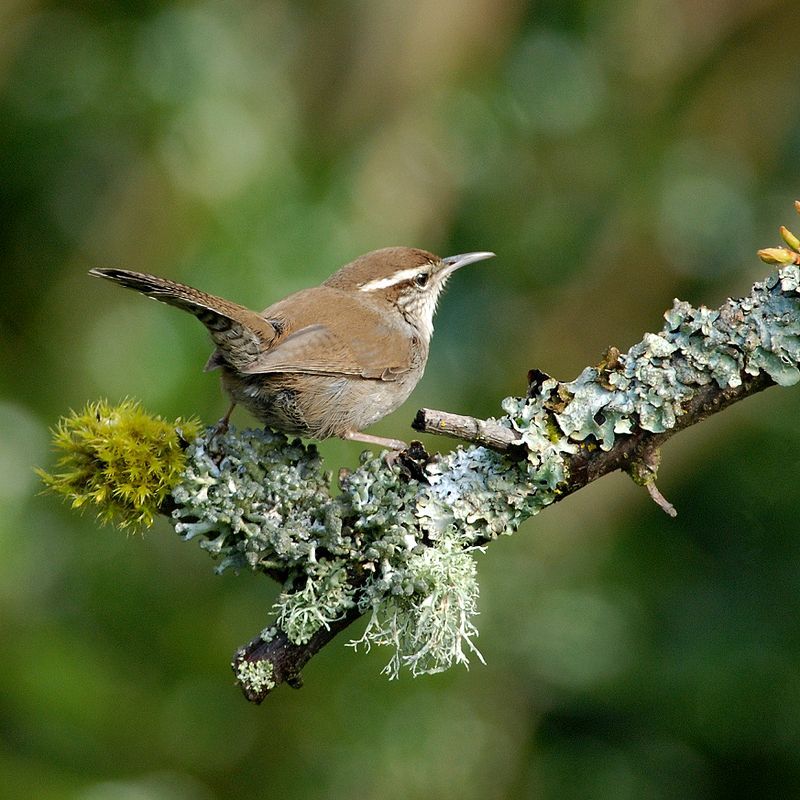
The Bewick’s wren is an attractive species of wren native to North America. It is the only wren in the Thryomanes genus, with a length of around 14 cm. Its coloring is grey-brown on its upper parts, white on its underside, and a distinctive white eyebrow.
Although it has a similar appearance to the Carolina wren, it differs in having a much longer tail, which is tipped in white. The Bewick’s wren is a shy bird, but it is often seen around the edges of forests in open woodlands and shrubby fields.
Its diet consists mainly of insects, spiders, and berries. Its most distinctive call is a loud ‘tsee-tsee-tsee’, which is often heard during the breeding season. It nests in tree cavities or nest boxes, and lays up to six eggs per clutch.
The Bewick’s wren is a hardy species and is not considered threatened. However, due to habitat destruction and the introduction of non-native species, its numbers have been declining in some parts of its range.
Conservation efforts are needed to ensure that this beautiful species can continue to be enjoyed by birdwatchers and nature lovers for many years to come.
| Kingdom | Animalia |
| Phylum | Chordata |
| Class | Aves |
| Order | Passeriformes |
| Family | Troglodytidae |
| Genus | Thryomanes |
| Species | T. bewickii |
17. California Towhee
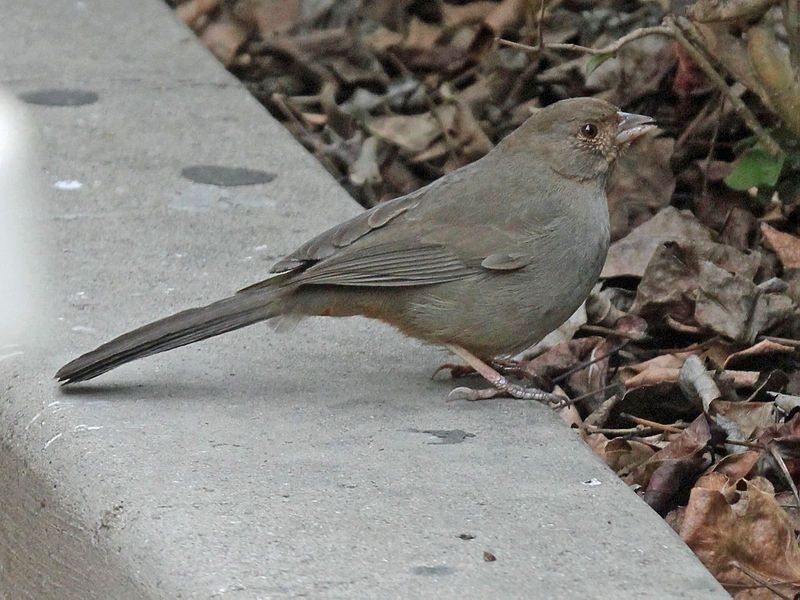
The California towhee is a species of bird belonging to the family Passerellidae. It is native to the coastal regions of western Oregon and California in the United States, as well as Mexico’s Baja California and Baja California Sur.
Despite its geographical range, its taxonomy has been a source of much debate. The debate on the taxonomy of the California towhee is due to the fact that the species is closely related to both the Canyon Towhee (Melozone fusca) and the Spotted Towhee (Melozone gularis).
As a result, some researchers argue that the California Towhee should be classified as part of the Melozone genus, while others argue that it should be its own species. The debate has been ongoing for many years, and there is still no consensus on whether the California Towhee should be classified as either its own species or part of the Melozone genus.
Further research is needed to determine the exact classification of the California Towhee, as well as its evolutionary history. In the meantime, the debate continues.
| Kingdom | Animalia |
| Phylum | Chordata |
| Class | Aves |
| Order | Passeriformes |
| Family | Passerellidae |
| Genus | Melozone |
| Species | M. crissalis |
18. Killdeer
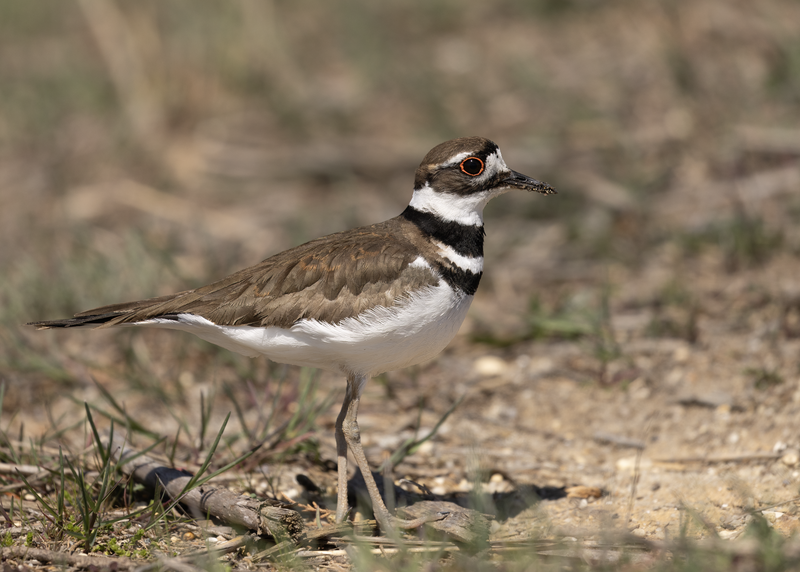
The Killdeer is a large plover bird found in the Americas. Its name comes from its distinctive, two-syllable call which is often heard in its natural habitat.
It was first described and given its current scientific name in 1758 by Carl Linnaeus in the 10th edition of his Systema Naturae. There are three different subspecies of killdeer that have been identified.
The Killdeer is a ground-nesting species, usually found near rivers, lakes, pastures, grasslands, and other open areas. They feed on small invertebrates such as insects, mollusks, and earthworms, and sometimes on grains and seeds.
These birds are monogamous and form long-term pairs. They build nests on the ground with shells, twigs, and leaves, and lay 3-4 eggs. Killdeers are well-known for their elaborate courtship displays and long-distance migrations.
They are also known for their aggressive behavior towards potential predators, such as humans. They will often fake an injury to draw attention away from their nest, or their young. They may also fly low over predators, making loud noises to scare them away.
The killdeer is an important species in the Americas and is valued by many people for its beauty and interesting behavior. It is a species of least concern according to the IUCN, and is protected in some areas.
The population of the killdeer is stable, and they are a species of concern due to their declining habitats.
| Kingdom | Animalia |
| Phylum | Chordata |
| Class | Aves |
| Order | Charadriiformes |
| Family | Charadriidae |
| Genus | Charadrius |
| Species | C. vociferus |
19. Varied Thrush
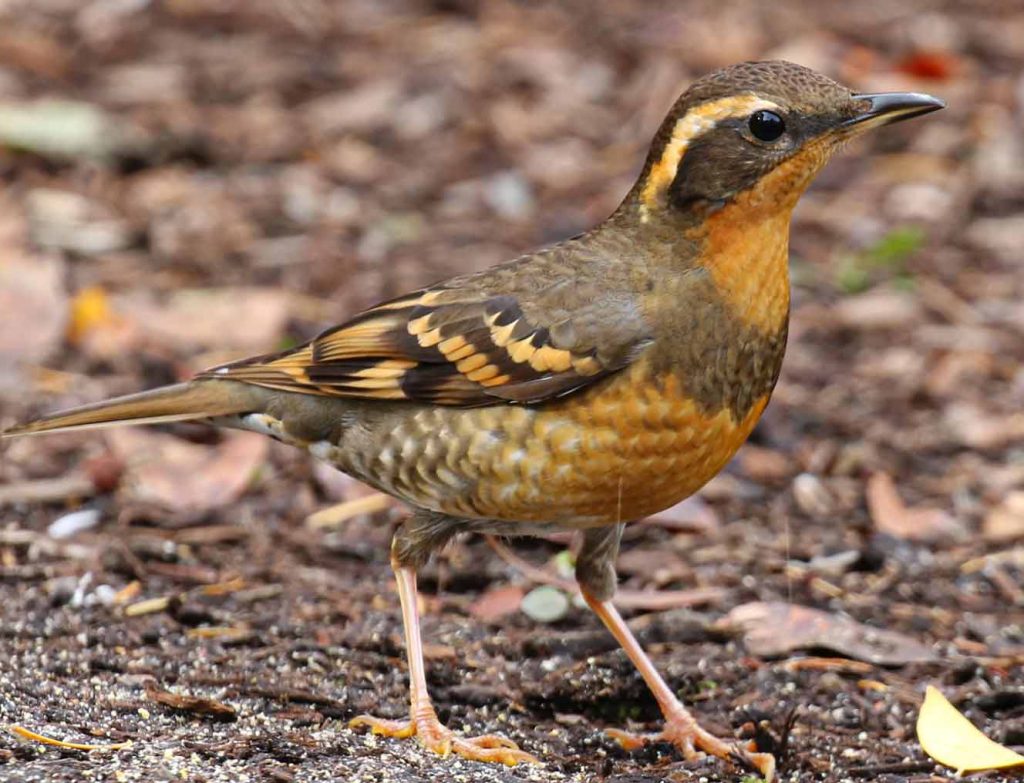
Source: audubon.org
The varied thrush is a unique member of the thrush family, Turdidae. It is the only species in the monotypic genus Ixoreus, which makes it a distinct species among its relatives.
The varied thrush is a medium-sized bird, with an olive-brown back, a white throat, and a bright orange breast. The wings and tail are black, with white spots and bars.
It is native to western North America, from Alaska to northern California, and can also be found in the Rocky Mountains and parts of the Great Plains. The varied thrush is an omnivore, eating a wide variety of insects, fruits, and seeds.
It prefers to forage on the ground, and will often scratch the ground with its feet to uncover food. It is also a vocal bird, and its song is a series of musical notes that can be heard throughout the year.
The varied thrush is an important species to its habitat, as its song and presence can attract other species of birds and wildlife. Its presence helps to maintain a healthy environment, and it is an important part of the natural ecological balance of North America.
| Kingdom | Animalia |
| Phylum | Chordata |
| Class | Aves |
| Order | Passeriformes |
| Family | Turdidae |
| Genus | Ixoreus |
| Species | I. naevius |
20. American Coot
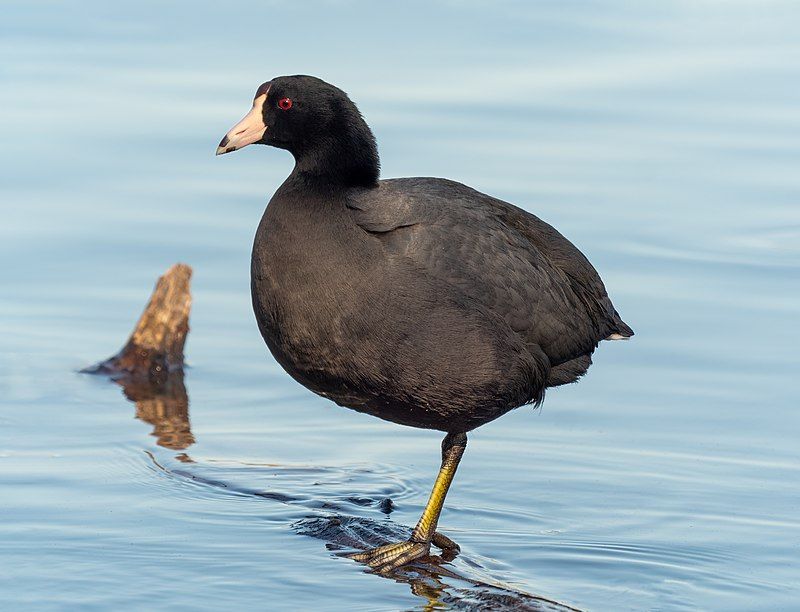
The American coot, scientifically called Fulica Americana, is a member of the Rallidae family. Despite its name, it is not related to the duck family but instead belongs to a different order.
It is also known as a mud hen or rouleau and is known for its distinctive black body with a white beak and a white bill. The American coot is a migrating bird, found in North America, Europe, and Asia.
It is a freshwater bird that prefers to stay near shallow waters such as ponds, marshes, and lakes. It feeds on aquatic plants and insects found in the water.
The American coot is also known for its swimming ability, as it can dive underwater to search for food. The American coot is a social bird and can often be seen in large flocks. It is also very vocal when in large groups, making loud, clucking noises.
During the breeding season, the male American coot will build a floating nest in which the female can lay her eggs.
The male will then watch over the nest and protect the eggs from predators. The American coot is an interesting bird that is often mistaken for ducks due to its similar appearance.
However, the American coot is only distantly related to ducks and belongs to a completely different family.
| Kingdom | Animalia |
| Phylum | Chordata |
| Class | Aves |
| Order | Gruiformes |
| Family | Rallidae |
| Genus | Fulica |
| Species | F. americana |
21. Spotted Towhee
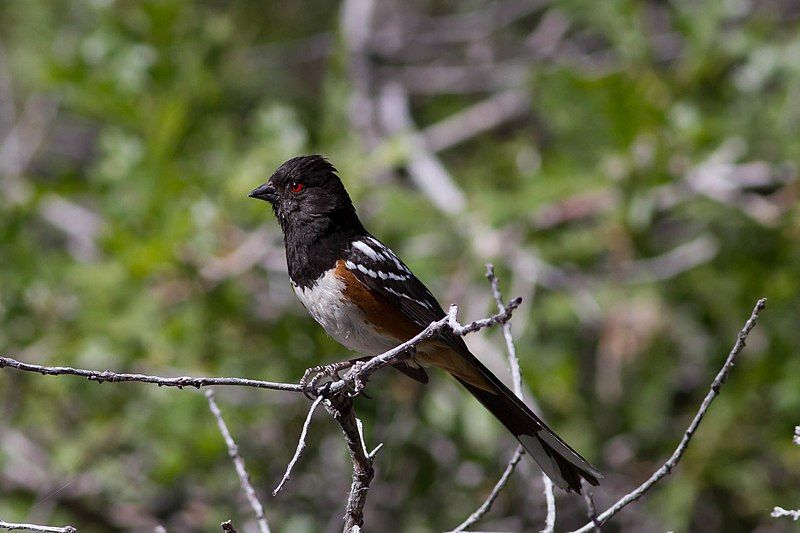
The spotted towhee is a species of sparrow native to the New World. It is a large bird, characterized by its mottled brown and black coloration. In recent decades, the taxonomy of the towhees has been debated by scientists.
Up until 1995, the spotted towhee and the eastern towhee were believed to be one and the same species, referred to as the rufous-sided towhee. After 1995, the two species were identified as separate birds, each with its own scientific name.
An outdated name for the spotted towhee is the Oregon towhee. This name was used prior to 1995 when the spotted towhee and the eastern towhee were still considered to be the same species.
| Kingdom | Animalia |
| Phylum | Chordata |
| Class | Aves |
| Order | Passeriformes |
| Family | Passerellidae |
| Genus | Pipilo |
| Species | P. maculatus |
22. Northern Harrier
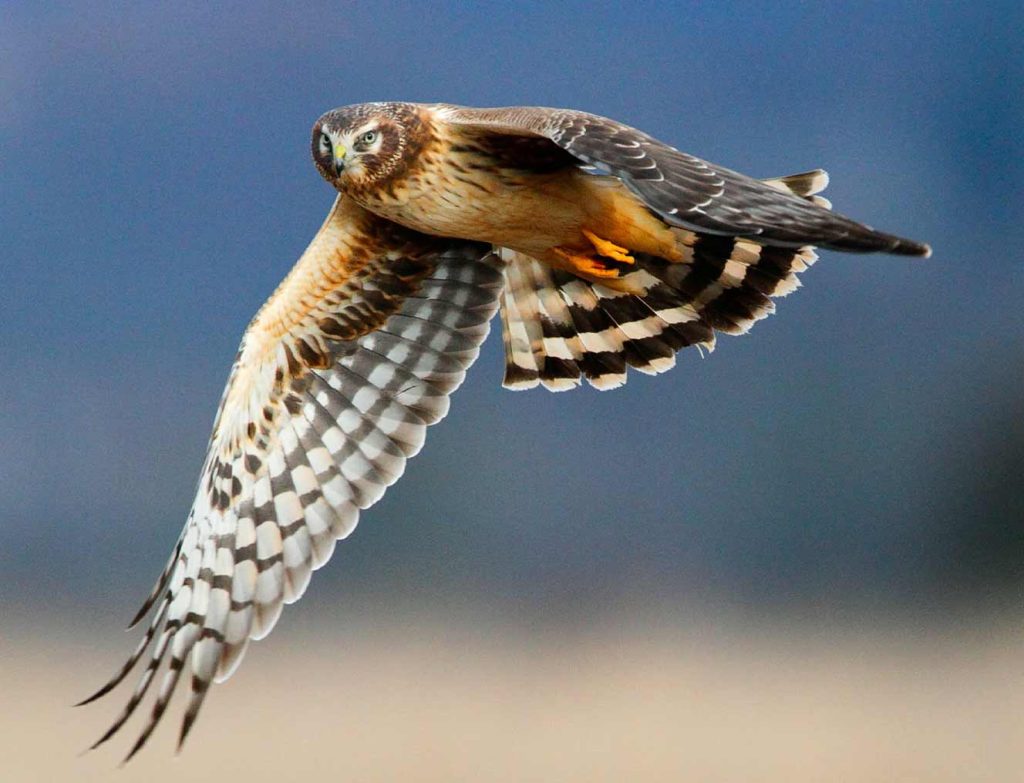
Source: audubon.org
The Northern Harrier is a raptor species found in northern regions of the Northern Hemisphere. It can also be known as the Marsh Hawk or Ring-Tailed Hawk. It is a medium-sized bird of prey, with a wingspan of about four feet.
The Northern Harrier is mostly found in open fields, along the edges of wetlands and bogs, and in other areas of lowland.
Its diet mainly consists of small mammals, such as voles, mice, and other small ground-dwelling animals. The Northern Harrier breeds throughout Canada and the northernmost parts of the United States, including Alaska.
It is a migratory species, so individuals may move south in the winter months. The female lays eggs in a well-concealed nest of sticks and grasses, usually built in a tree. The male will bring food to the female while she incubates the eggs.
The chicks will fledge in about a month, and the parents will continue to feed them until they can hunt on their own. The Northern Harrier is an important species for maintaining a healthy ecosystem.
It helps to control the population of small rodents, which can be a major agricultural pest. In addition, its presence can provide a source of food for other raptors, such as owls and eagles.
This species is also a great indicator species since its presence or absence can tell us a lot about the health of its environment.
| Kingdom | Animalia |
| Phylum | Chordata |
| Class | Aves |
| Order | Accipitriformes |
| Family | Accipitridae |
| Genus | Circus |
| Species | C. hudsonius |
23. Osprey
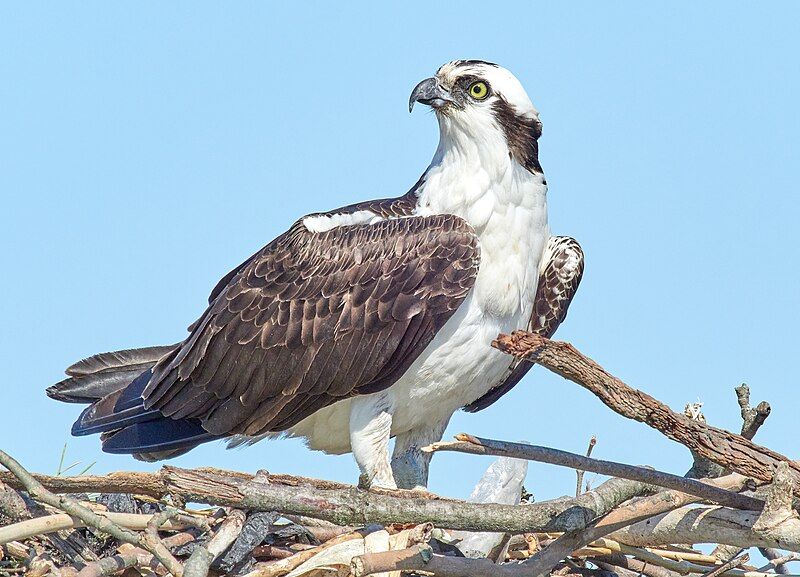
The osprey is a large bird of prey that is found all over the world. Its common names, such as sea hawk, river hawk, and fish hawk, indicate its diet, which consists primarily of fish. The Osprey is a diurnal hunter, meaning it hunts during the day.
It can reach a length of more than 60 cm and has a wingspan of up to 180 cm. In terms of coloration, the osprey is brown on the top side and has a predominantly greyish color on the head and belly.
| Kingdom | Animalia |
| Phylum | Chordata |
| Class | Aves |
| Order | Accipitriformes |
| Family | Pandionidae |
| Genus | Pandion |
| Species | P. haliaetus |
Conclusion
In conclusion, San Bruno is a great place to observe birds of all shapes and sizes. From the vibrant and colorful hummingbirds to the majestic and graceful hawks, birds of all varieties can be found in this unique and beautiful city.
The diversity of bird species in San Bruno provides an interesting and exciting opportunity for birders to explore and appreciate the natural world.